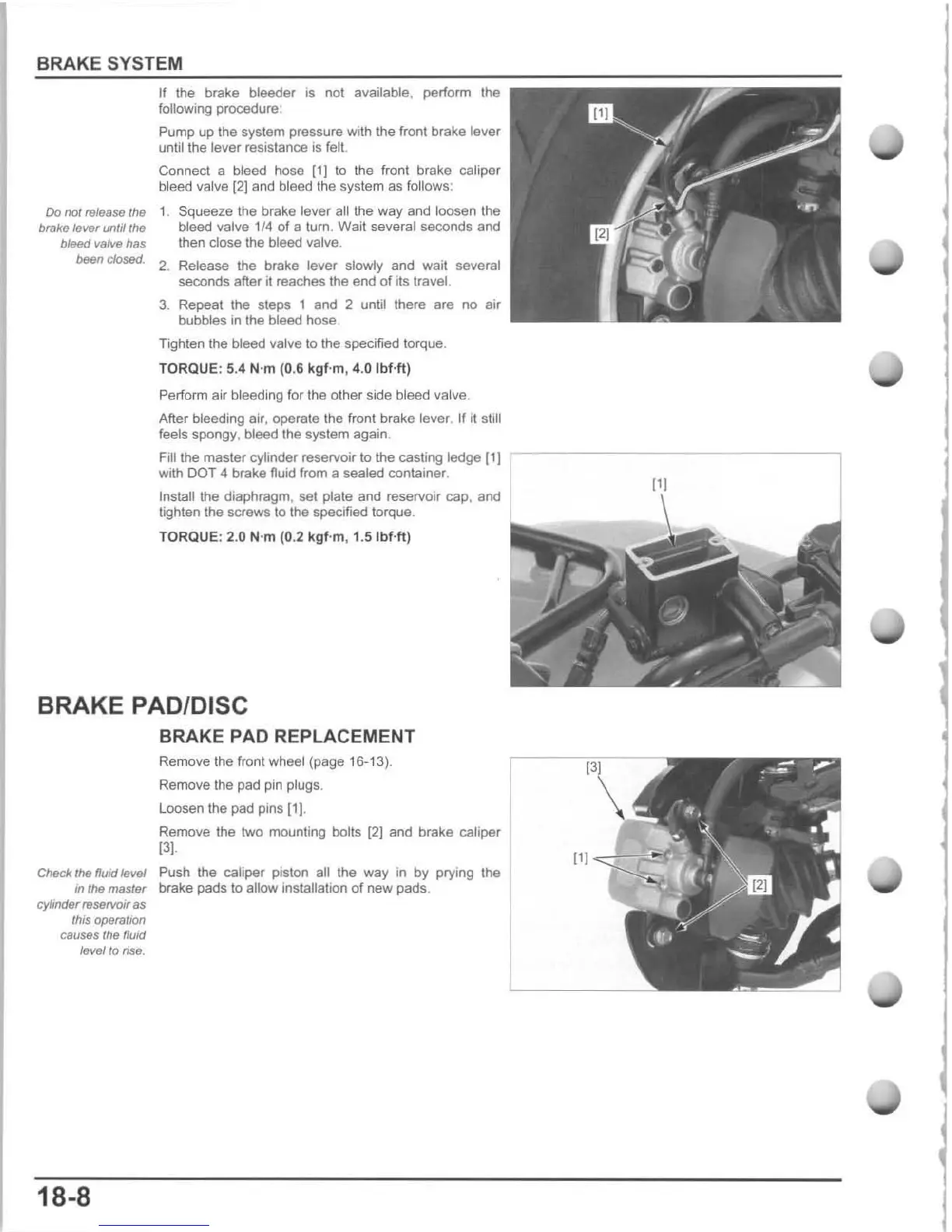BRAKE SYSTEM
If
the
brake bleeder is not available, perform the
following procedure;
Pump
up
the system pressure with the front brake lever
until the lever resistance is felt.
Connect a bleed hose
[I]
to
the front brake caliper
bleed valve
(2)
and bleed the system as follows:
Do
not
releaSJJ
the
1. Squeeze the brake lever all the
way
and loosen the
brake /everunti/ the bleed valve 1/4 of a turn. Wail several seconds and
bleed
valve
has
then close the bleed valve.
been
Closed.
2. Release
the
brake lever slowly and wail several
seconds after it reaches the end of its travel.
3.
Repeal the steps 1
and
2 until there are
no
air
bubbles in the bleed hose.
Tighten the bleed valve to the specified torque.
TORQUE: 5.4 N'm (0.6
kgf'm
, 4.0
IbHt)
Perform air bleeding for the other side bleed valve.
After bleeding air, operate the front brake lever. If
it
still
feels spongy, bleed the system again.
Fill the master cylinder reservoir to the casting ledge
[11
with
DOT
4 brake fluid from a sealed container.
Install the diaphragm, set plate and reservoir cap. and
tighten the screws to the specified torque.
TORQUE:
2.0 N'm (0
.2
kgf
'm , 1.
5IbHt)
BRAKE PAD/DISC
BRAKE PAD REPLACEMENT
Remove the front wheel (page 16-13).
Remove the pad pin
plugs.
Loosen the pad pins (1].
Remove the two mounting
bolts
121
and brake caliper
(3]
.
Check
the
fluid
level
Push the caliper piston all the way in
by
prying the
In
the
master
brake pads to allow installation
of
new pads.
cylInder reservoir
as
this operatIOn
causes
the fluid
leve/to
rise.
18-8

